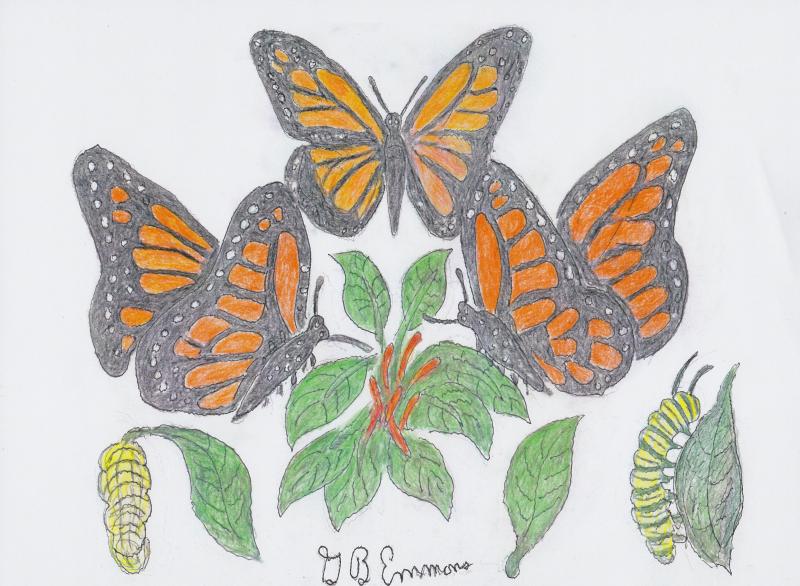The vanishing monarch butterfly
Reader George B. Emmons of Fairhaven contributes occasional essays about the wildlife of Wareham.
The monarch butterfly population has been declining for decades.
The tragic loss of this colorful species, lovingly known as “mother nature’s children,” is due to the destruction of its staple diet and habitat — the milkweed plant — and the deadly impact of global warming.
This year especially, the monarchs, once a cherished seasonal memory, are becoming forgotten.
A monarch’s life cycle begins when an adult lays a single egg on a milkweed plant. A larva, more commonly known as a caterpillar, emerges from the egg and begins to eat the milkweed plant. The larva then begins its next stage of life as a chrysalis. About one month after the egg was laid, an adult monarch emerges from the chrysalis, stretching its wings.
The female will lay as many as 300 eggs during her lifetime, launching this four-stage metamorphosis process.
Amazingly, the last generation of the season does not reproduce immediately, and is said to be in a suspended state called a “reproductive diapause.” These butterflies migrate south to Mexico for the winter and only become reproductive in February and March, as they migrate back north.
The migratory butterflies can live up to nine months, compared to the non-migratory butterflies, which have a lifespan of about two to five weeks.
The migratory generations fly somewhere between 2,000 to 3,000 miles to overwinter in Mexico.
Scientists are still trying to discover what directional aids the monarchs use for migration. It appears from research that a main method of navigation is the magnetic pull of the earth and the position of the sun during migration.
More than 90 percent of North American monarchs have somehow been wiped out over the last 20 years. Adult monarchs feed on the nectar of many types of flowers, but they breed only where milkweeds are found. For this reason, milkweed is known as a host plant for the monarch larvae that develops into adult butterflies.
Several national environmental conservation organizations are working of this phenomenon, including the Environmental Defense Fund and Friends Of Wildlife.
However, it seems to me that planting a butterfly garden at private homes or elsewhere in the community would help reduce the threat of extinction locally. Then the colorful living spirit of the natural world might soon travel right through our own back yards.
The U.S. Forest Service’s “The Monarch Butterfly in North America” page was used as a resource when writing this article. For more information, visit: www.fs.fed.us/wildflowers/pollinators/Monarch_Butterfly/













